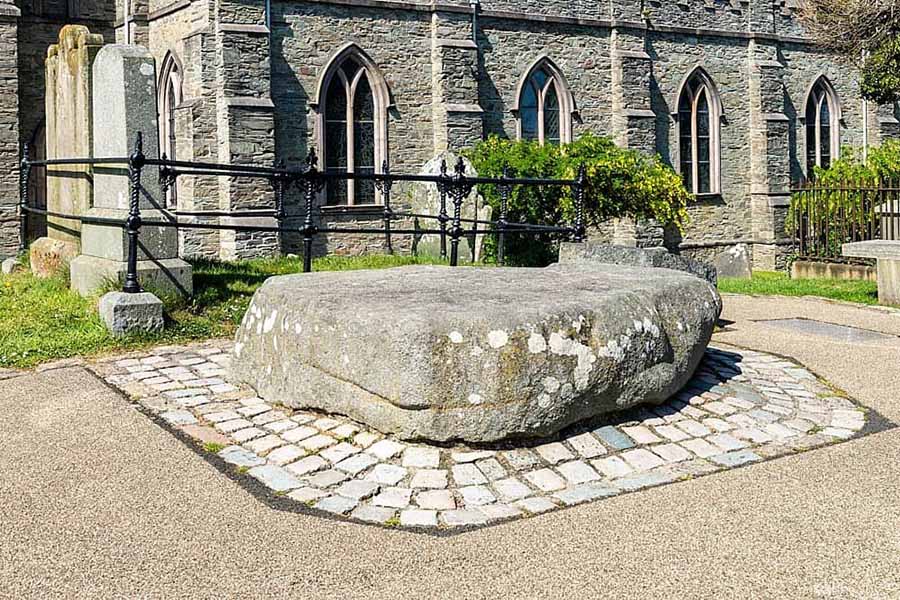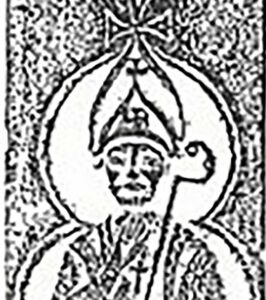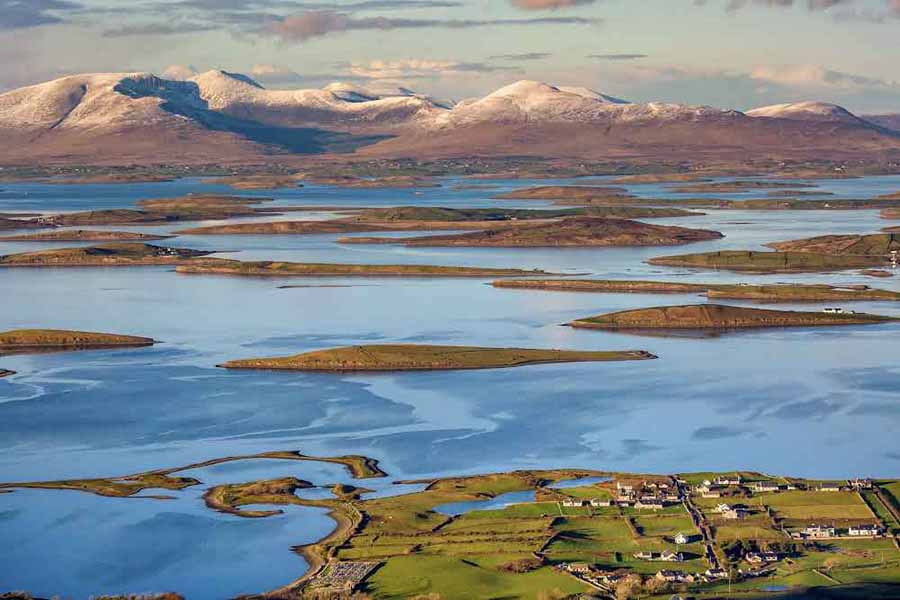
Places associated with Saint Patrick:
- Armagh – Patrrick does not refer to Armagh at all in his own writings but, since Murchada and Tirechan put ink to vellum in the 800s, it has all been about Armagh. The ecclesiastical city used Patrick to enhance its prestige and revenue. In 1111 Armagh was acknowleged as the ecclesiastical capital of Ireland and remains so today in the Catholic and Episcopalian religions.
- Croagh Patrick (County Mayo, Ireland) – In the 800s Tirechán wrote a biography that was essentially a reconstruction of the saint’s itinerary in Ireland rather than a life, putting emphasis on mayo and the western seaboard. Saint Patrick is said to have fasted and prayed on this mountain for 40 days, an echo of Moses’ sojourn on Mount Sinai, leading to its status as a popular pilgrimage destination on Garland Sunday in July, previously associated with the pagan figure Lúg.

- Downpatrick Cathedral – Patrick was said in the seventh century to have been buried in Downpatrick. That no alternative claim is documented lends some authority to this tradition., making it a significant pilgrimage site for those honouring the patron saint of Ireland. Local landowner Hugh de Lacy staged a commercially convenient “discovery” of the relics of Patrick, as well as those of Columcille and Brigid in 1185, and turned them into a lucrative pilgrimage site. The flagstone over the grave is of recent origin, largely to prevent clay being removed from the site.

- Faughart, County Louth: Site of the earliest representation of Saint Patrick, sculpted in the 1300s, on a site also associated with Saint Brigid.
- Rock of Cashel (County Tipperary, Ireland) – Legendary site Saint Patrick converted the King of Munster to Christianity, establishing it as an important site in his missionary efforts and Christian centre of Munster.
- Saint Patrick’s Cathedral (Church of Ireland) honours Saint Patrick while Christ Church cathedral serves Dublin.
- Saint Patrick’s Shrine (Lough Derg, County Donegal, Ireland) – First mentioned by Jocelin of Furness and Gerald of Wales in the 1100s, by the 1300s it had achieved European fame. Pilgrims, by entering a cave, experienced the pains of purgatory through physical and sensory deprivation. The civil authorities reformation bishops of Clogher (in whose diocese it lay) tried to suppress the pilgrimage in vain and it continues today, although no trace of the cave remains, a sacred pilgrimage site where Saint Patrick is said to have spent time in prayer and solitude, attracting visitors seeking spiritual renewal.
- Saint Patrick’s Trail – A 92 mile linear driving route linking 15 key sites, some famous, some less so: the Ruins of St. Tassach’s church where Saint Patrick was given the last rites, or the holy wells at Struell, Grey Abbey and Inch Abbey. It extends across country to meet the canal towpath at Tandragee, following the tow path into Newry, picking up the Mourne Way, the northern side of the mountain, Murlough way, Kilkeel way and through a network of small roads into Downpatrick.
- Saul, County Down – The Church of Saint Patrick in Saul built in 1932 for the 1500th anniversary of his birth on what was believed to have been the site of his baptism since the 700s.
- Slane, County Meath: Site of the paschal fire lit by Saint Patrick, according to biographies compiled in the 700s.
- Slemish, County Antrim: Celtic sacred mountain that became associated with the site of Patrick’s bondage in Ireland for six years as a captive, it is not mentioned by the Saint in his own writings.
- Waterford: Site of the first Saint Patrick’s day parade as we know it today in 1903, and birthplace of Luke Wadding, who assured Saint Patrick’s place in Catholic culture by including him in the Roman breviary (1631) and in the revised Roman calendar (1632).




